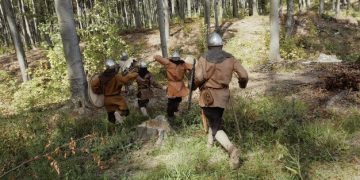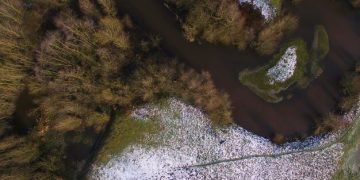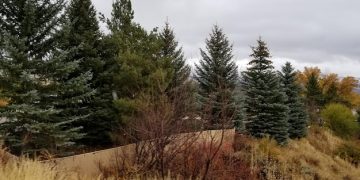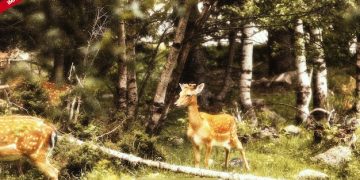How Citizen Scientists Can Track Monarch Butterfly Migration in 2025
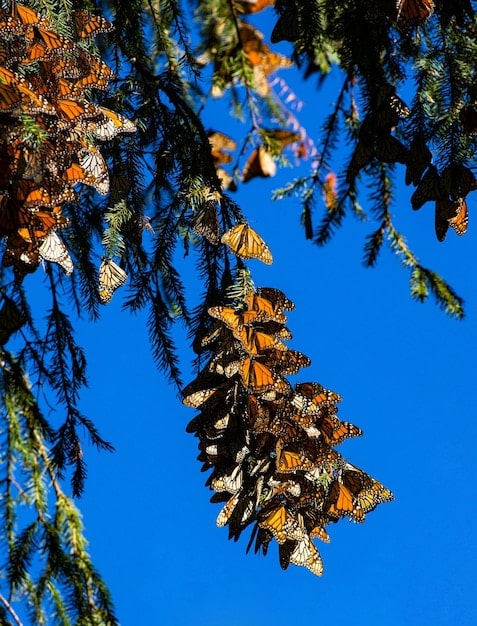
In 2025, citizen scientists can significantly contribute to tracking monarch butterfly migration patterns by participating in monitoring programs, submitting data through online platforms, and engaging in community outreach, aiding researchers in understanding and conserving this iconic species.
The annual migration of monarch butterflies is a breathtaking natural phenomenon. In 2025, how can citizen scientists contribute to tracking the migration patterns of monarch butterflies? By participating in organized programs and readily sharing field observations, nature enthusiasts can play a crucial role in supporting conservation efforts.
Citizen Science: An Overview
Citizen science is becoming increasingly important in ecological research. It allows the public to engage directly in scientific studies, providing valuable data that researchers might not otherwise be able to collect.
With the decline in monarch butterfly populations, understanding their complex migration patterns has never been more critical, making contributions from citizen scientists invaluable.
The Role of Citizen Scientists
Citizen scientists play a pivotal role in tracking monarch butterfly migration by:
- Collecting data on monarch sightings: Recording locations, dates, and behaviors adds to a comprehensive picture.
- Tagging monarchs for tracking: Applying tags allows researchers to track individual butterflies across long distances.
- Monitoring milkweed habitats: Milkweed is essential for monarch larvae and tracking its availability is key.
This collective effort enhances data collection and broadens public awareness.

By participating in citizen science projects, individuals not only contribute to critical research but also gain a deeper appreciation for nature. Their involvement supports conservation efforts and helps inform policy decisions aimed at protecting these magnificent creatures.
Understanding Monarch Migration Patterns
Monarch butterflies undertake one of the most remarkable migrations in the animal kingdom. Every year, they travel thousands of miles across North America, a journey spanning multiple generations.
Understanding these migration patterns is crucial to implementing effective conservation efforts, but the massive scale of the migration requires an equally broad data-gathering approach.
Key Migration Routes
The eastern monarch population migrates from Canada and the United States to overwintering sites in the oyamel fir forests of central Mexico, while the western population migrates to various sites along the California coast.
- Eastern Population: Travels south through the central and eastern United States to Mexico.
- Western Population: Migrates to the California coast.
- Multi-Generational Journey: The entire migration spans several generations of butterflies.
These patterns are influenced by weather, habitat availability, and other environmental factors. Citizen scientists help illuminate these influences.
These vast migrations face numerous threats, including habitat loss, climate change, and pesticide use. Monitoring these routes helps identify and mitigate these dangers, safeguarding the monarchs’ journey.
How Citizen Scientists Can Help in 2025
In 2025, citizen scientists will continue to be vital in collecting data and aiding research on monarch butterfly migration. Their consistent efforts enable researchers to obtain a more complete dataset.
Here are specific ways individuals can contribute.
Participating in Monitoring Programs
Several established programs allow citizen scientists to actively participate in monarch butterfly monitoring.
These programs provide training, resources, and structured ways to collect and report data, ensuring that the data is consistent and reliable.
- Journey North: Reports sightings of monarchs and milkweed.
- Monarch Watch: Tags monarchs and tracks their movements.
- Integrated Monarch Monitoring Program (IMMP): Assesses monarch habitat and populations.
Consistency in participation is crucial. Regular monitoring and data submission ensure longitudinal studies, which are invaluable in understanding population trends.
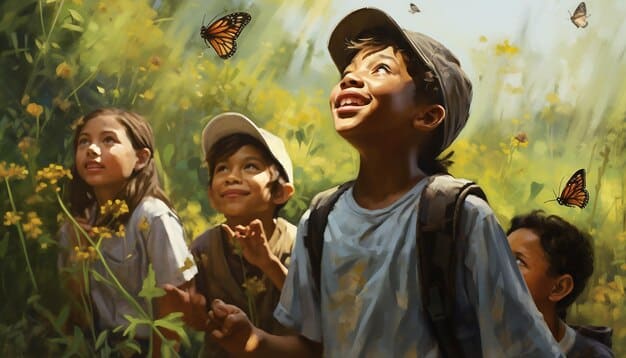
By joining these programs, citizen scientists become part of a larger scientific community, advancing research and informing conservation strategies.
Submitting Data Through Online Platforms
One of the most accessible ways citizen scientists can contribute is by submitting their observations through online platforms. These platforms often provide user-friendly interfaces for reporting monarch sightings and behaviors.
These submissions help create a robust, real-time dataset that can be analyzed by researchers and conservationists.
Using Mobile Apps
Several mobile apps make it simple to report monarch sightings on the go. These apps often include features like GPS tracking and photo uploads, enhancing data accuracy.
Platforms like iNaturalist and Bumble Bee Watch allow users to log sightings, upload photos, and share observations with a community of naturalists and scientists.
- iNaturalist: A global platform for sharing biodiversity observations.
- Bumble Bee Watch: Focuses on bumble bees but also allows monarch sightings.
- Journey North: Has a specific interface for reporting monarch data.
Regularly updating these platforms with timely and accurate data is critical for monitoring population trends and migration patterns. The more data available, the clearer the picture becomes.
Ensure the information shared is accurate and detailed, including location, date, time, and any relevant observations about monarch behavior and habitat conditions.
Engaging in Community Outreach
Beyond data collection, citizen scientists can also contribute by engaging in community outreach and education.
Raising awareness about monarch butterflies and their conservation is crucial for inspiring action and garnering support for these iconic insects.
Educational Initiatives
Organizing workshops, giving presentations, and participating in local events are all effective ways to educate others about monarch migration and conservation. Schools, community centers, and nature reserves are great venues for such outreach.
Engaging the community through educational activities can deepen the understanding of environmental issues and motivate more people to take action.
- Workshops: Teach others how to identify and tag monarchs.
- Presentations: Share information about monarch migration.
- Events: Host local monarch-themed events.
Social media can amplify the reach of these educational efforts. Sharing photos, videos, and stories about monarch butterflies online can engage a broader audience.
Create informative content, share conservation tips, and encourage others to participate in citizen science projects. The power of social media can transform passive observers into active participants.
Future Technologies for Tracking
As technology advances, new tools are emerging that can enhance the ability of citizen scientists to track monarch migration.
These innovations promise to make data collection more efficient, accurate, and accessible.
Drones and Remote Sensing
Drones equipped with cameras can survey vast areas of habitat quickly, providing an overview of milkweed availability and monarch populations. Remote sensing technologies can also identify potential habitats.
These technologies can complement ground-level observations by citizen scientists, offering a broader perspective on monarch habitats and population distributions.
- Drones: Survey habitats quickly and efficiently.
- Remote Sensing: Identifies potential monarch habitats.
- AI: Automates image analysis to detect monarchs.
AI algorithms can automate the analysis of images and data collected by citizen scientists, reducing the time and effort required to process large datasets.
By embracing these new technologies, citizen scientists can expand their impact and contribute even more effectively to monarch conservation efforts.
| Key Aspect | Brief Description |
|---|---|
| 🦋 Monitoring Programs | Join programs like Monarch Watch to track monarch butterflies. |
| 📱 Online Data Submission | Use platforms like iNaturalist to report monarch sightings. |
| 📣 Community Outreach | Educate others through workshops and social media. |
| 🛰️ Future Tech | Utilize drones and AI for better tracking. |
Frequently Asked Questions
▼
Tracking monarch migration helps understand their behavior, population trends, and the factors affecting their survival. This knowledge is essential for conservation efforts.
▼
Use online platforms like iNaturalist or dedicated monarch monitoring apps to report sightings. Include details like location, date, time, and any photos.
▼
Join programs like Monarch Watch that provide training and tagging kits. Follow their guidelines for safely tagging and reporting monarch butterflies.
▼
Plant native milkweed species that are appropriate for your region. Native milkweed is best suited for monarch larvae and supports healthy monarch populations.
▼
Schools can create monarch gardens, participate in tagging programs, and incorporate monarch migration into their curriculum. These activities promote environmental education.
Conclusion
Citizen scientists play an indispensable role in tracking monarch butterfly migration. By participating in monitoring programs, submitting data, engaging in community outreach, and embracing future technologies, individuals can contribute significantly to understanding and conserving these iconic insects, ensuring their survival for generations to come.
